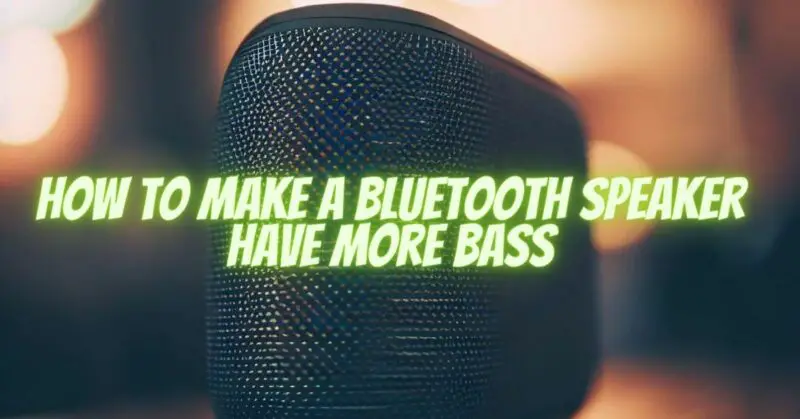Bluetooth speakers have revolutionized the way we enjoy music on the go, providing convenience and portability without compromising on sound quality. However, for those who crave a little more oomph in their music, enhancing the bass output of your Bluetooth speaker can make a significant difference. In this article, we’ll explore various techniques to help you achieve richer and more impactful bass from your Bluetooth speaker.
- Choose the Right Speaker
Before diving into modifications, it’s essential to start with a Bluetooth speaker that’s designed to deliver good bass. Look for models that feature a dedicated subwoofer or passive radiators, as these components are crucial for producing deep bass frequencies. Read reviews and user feedback to ensure the speaker you select aligns with your bass preferences.
- Optimize Speaker Placement
Proper speaker placement can significantly affect bass performance. Placing your Bluetooth speaker near a corner or against a wall can amplify bass due to the “room gain” effect. Experiment with speaker placement in different areas of the room to find the sweet spot where bass sounds the best. Keep in mind that the positioning of your speaker can impact overall sound quality, so take some time to find the ideal location.
- Adjust Equalizer Settings
Most Bluetooth speakers come with built-in equalizer settings that allow you to adjust the sound profile to your liking. To enhance the bass, try increasing the lower frequencies on your speaker’s EQ. If your speaker has preset EQ modes, look for one labeled “bass boost” or “party mode,” as these often prioritize bass frequencies.
- Use a Dedicated Bass Boosting App
Many smartphones and tablets have dedicated apps or built-in features that can enhance bass output when paired with a Bluetooth speaker. Apps like Equalizer FX, Bass Booster, or Poweramp allow you to fine-tune the audio settings, including bass levels, to suit your preferences. These apps can be particularly useful if your Bluetooth speaker lacks advanced EQ options.
- Invest in an External Subwoofer
For those who are serious about boosting bass, consider adding an external subwoofer to your Bluetooth speaker setup. Wireless subwoofers can be connected to your Bluetooth speaker, providing a significant increase in low-frequency response. Ensure that your speaker and subwoofer are compatible and that the subwoofer is positioned appropriately for the best results.
- Use High-Quality Audio Files
The source of your music matters when it comes to bass enhancement. Use high-quality audio files (e.g., FLAC or WAV) rather than compressed formats like MP3. Higher-quality files can provide a more detailed and impactful bass response.
- Adjust Volume Carefully
It’s important to note that bass can become distorted at high volumes. To avoid damaging your speaker and ensure clear and powerful bass, maintain a reasonable volume level. If you need more bass, consider adjusting the EQ settings or using external bass-boosting devices.
- Upgrade Your Bluetooth Speaker
If you find that your current Bluetooth speaker lacks the bass you desire, it might be time to consider an upgrade. Look for speakers with larger drivers, advanced bass-enhancing technologies, and higher power output. Keep in mind that investing in a better-quality speaker can make a significant difference in your overall listening experience.
Enhancing the bass in your Bluetooth speaker can be a rewarding endeavor, as it can bring new life to your music collection and provide a more immersive listening experience. By choosing the right speaker, optimizing placement, adjusting EQ settings, using bass-boosting apps, adding external subwoofers, and maintaining careful volume control, you can achieve deeper and more satisfying bass from your Bluetooth speaker. Remember to prioritize the health and longevity of your speaker while pursuing your quest for enhanced bass.


